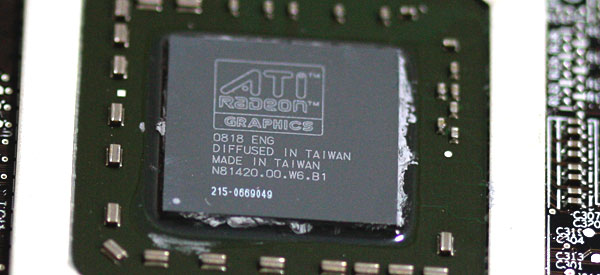2 - Chipset tech chatter -- the RV770 versus R700
Codename R700
The X2 cards that are being released today will be available in many configurations. Board-partners are free in their choices, so you'll see X2 based cards with 4850 specific GDDR3 memory configurations and 4870 cards with a number of GDDR5 memory configurations. Example: you will see cards with 1GB, 2GB maybe even 4GB memory. You also need to be aware of that when purchasing the product that the memory will be cloned. If you purchase a 1 GB card, each GPU will get 512MB memory to work in. So in essence you have 512MB framebuffer with a 1 GB product. Very important.
We've tested reference based samples, meaning the 2 GB cards. But to understand the Radeon HD 4850/4870 X2 graphics card, you must learn a little more about the GPUs that are empowering the product; and what do you know ... you already know it under the name Radeon HD 4850/4870, yet was developed under the codename RV770.
Chipset tech chatter -- the RV770
The minute AMD launched it's RV770 chip (Radeon HD 4850/4870), AMD effective doubled up performance over the last-gen product especially for you at a very acceptable price level. Quite an achievement. But to understand the X2 products, we need to talk a little about the GPU and the differences between the two models that where released (4850/4870), the RV770 based chipset.
The RV770 chip is built upon a 55-nm fabrication process. AMD put nearly a billion transistors into that GPU.
The chip exactly is 16 mm wide and high. Ironically for AMD that still is quite large, (for a 55nm product). The number of transistors for a midrange chip like this is extreme and typically it's best to directly relate that to the number of shader processors to get a better understanding.
The Radeon 4850/4870 have 800 scalar sub-processors (320 on the HD 3800 series) and now have a significant forty texture units (was 16 in last-gen architecture). The stream/compute/shader processors (can we please just name them all shader processors?) definitely had a good number of changes; if you are into this geek talk, you'll spot 10 SIMD clusters each carrying 80 32-bit Shader processors (this accumulates to 800 ). If I remember correctly, one SIMD unit can handle double precision.
Much like we recently noticed in NVIDIA's GTX 200 architecture, the 80 scalar stream processors per unit per SIMD unit have 16KB of local data cache/buffer that is shared among the shader processors. Next to the hefty shader processor increase you probably already noticed the massive amount of texture units. In the last generation product we noticed 16 units, the 4800 series has 40 units.
When you do some quick math, that's 2.5x the number of shader processors over the last-gen product, and 2.5x the number of texture units.
Since the GPU has 800 shader processors it can produce the raw power of 1000 to 1200 GFlops in simple precision. It's a bit lame and inaccurate to do but ... divide the number of ATI's scalar shader processors with the number 5 and you'll roughly equal the performance to NVIDIA's stream processor, you could (in an abstract way) say that the 4800 series have 160 Shader units, if that helps you compare it towards NVIDIA's scaling. There's nothing scientific or objective about that explanation.
The number of transistors for a product priced like this is quite excessive and typically it's best to directly relate that to the number of shader processors to get a better understanding.
A Radeon HD 4850 X2 or 4870 X2 (R700) has two of the aforementioned RV770 cores embedded onto the PCB each with it's own assigned framebuffer (memory). The two GPUs are bridged with the help of a PCI Express chip, generation two. It offers plenty of bandwidth and accumulates up to 10 GB/sec inter GPU bandwidth and then another 10 GB/sec connection to your PCIe slot. For future purposes AMD also incorporated another interconnect. It's called Sideport and in theory could allow for yet another accumulated 10 GB/s (5GB from GPU + 5GB to GPU) data connection. Currently it's not used or needed at all. That Sideport therefore is disabled at software level.
Memory then. The 4850 X2 will have GDDR3 memory. The 4870 X2 will get GDDR5 memory. Despite some peculiar rumors on the web, on both configurations the memory is still cloned. Meaning, if you have a 2GB 4870 X2 card, each GPU has 1 GB memory available. The same rule applies to the memory bus.
AIBs will definitely stick 512-bit memory bus on the box, where in fact it'll be 2x 256-bit.
 One of the two RV770 cores utilized on the R700 product.
One of the two RV770 cores utilized on the R700 product.
